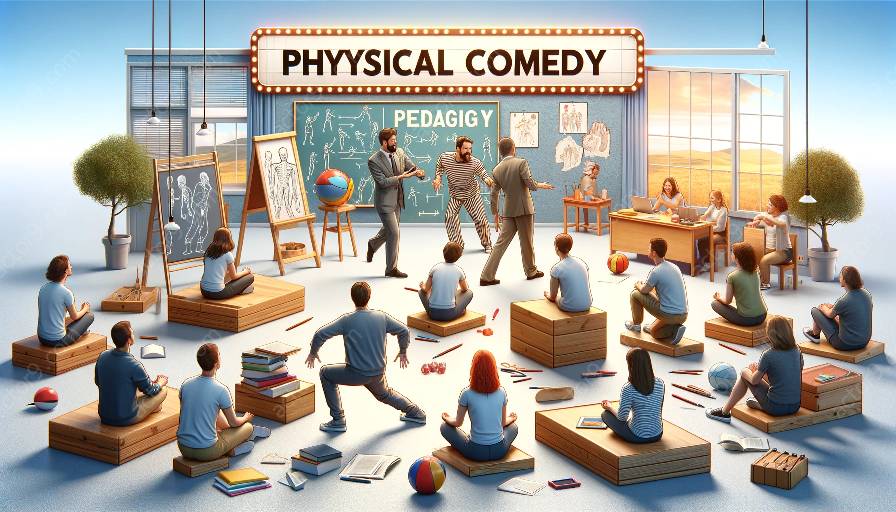Physical comedy has long been an essential component of performing arts, influencing the development of acting skills and shaping the way actors approach their craft. In this article, we will explore the profound impact of physical comedy on acting, its connection to pedagogy, and its relationship with mime.
Understanding Physical Comedy
Physical comedy is a form of entertainment that encompasses various gestures, actions, and movements designed to evoke laughter and amusement from the audience. It often involves exaggerated facial expressions, slapstick humor, and comedic timing, making it a highly engaging art form that requires mastery of the body and physical expression.
Influence on Acting Skills
Physical comedy plays a crucial role in the development of acting skills by enhancing an actor's ability to express emotions, create memorable characters, and establish a strong stage presence. Through physical comedy, actors learn to use their bodies as a powerful tool for storytelling, effectively conveying humor, and connecting with the audience on a visceral level.
Furthermore, physical comedy encourages actors to explore unconventional methods of expression, fostering creativity and spontaneity in their performances. The exaggerated movements and comedic timing inherent in physical comedy train actors to be adaptable and agile, qualities that are invaluable in the dynamic world of theater and film.
Connection to Pedagogy
Physical comedy's influence on the development of acting skills extends to the realm of pedagogy, where it serves as a foundation for teaching aspiring actors the art of physical expression. Many acting schools and theater programs incorporate elements of physical comedy into their curriculum, recognizing its ability to instill discipline, awareness of body language, and a deep understanding of comedic timing.
Moreover, the principles of physical comedy can be used to facilitate the learning of acting techniques, offering students a unique and engaging approach to honing their craft. By incorporating physical comedy into pedagogical practices, educators can nurture a well-rounded understanding of acting that combines emotional depth with physical dexterity.
Benefits for Actors
The integration of physical comedy into actor training yields numerous benefits, including improved physical coordination, heightened spatial awareness, and the ability to captivate an audience through physical charisma. Additionally, mastering physical comedy equips actors with a diverse range of performance skills, enabling them to transition seamlessly between comedic and dramatic roles.
Furthermore, the collaborative nature of physical comedy fosters teamwork and creative exchange among actors, promoting a supportive and dynamic environment for the development of their craft. By embracing physical comedy, actors can expand their repertoire and approach their roles with a fresh perspective, enriching their performances with spontaneity and inventive physicality.
Relationship with Mime
Mime, often closely associated with physical comedy, shares a symbiotic relationship with the development of acting skills. While physical comedy relies on exaggerated actions and comedic timing to elicit laughter, mime focuses on the art of silent storytelling through gestures, facial expressions, and body movements.
Furthermore, mime enhances an actor's nonverbal communication skills, promoting a deep understanding of physical expression and enabling them to convey complex emotions and narratives without relying on dialogue. As such, the integration of mime techniques with physical comedy enriches an actor's repertoire, expanding their ability to communicate and connect with audiences on a profound level.
Conclusion
Physical comedy significantly influences the development of acting skills by nurturing creativity, enhancing physical expression, and promoting a versatile approach to performance. Its seamless integration with pedagogy and its symbiotic relationship with mime ensures that physical comedy remains a cornerstone of actor training and a fundamental aspect of the performing arts.


























